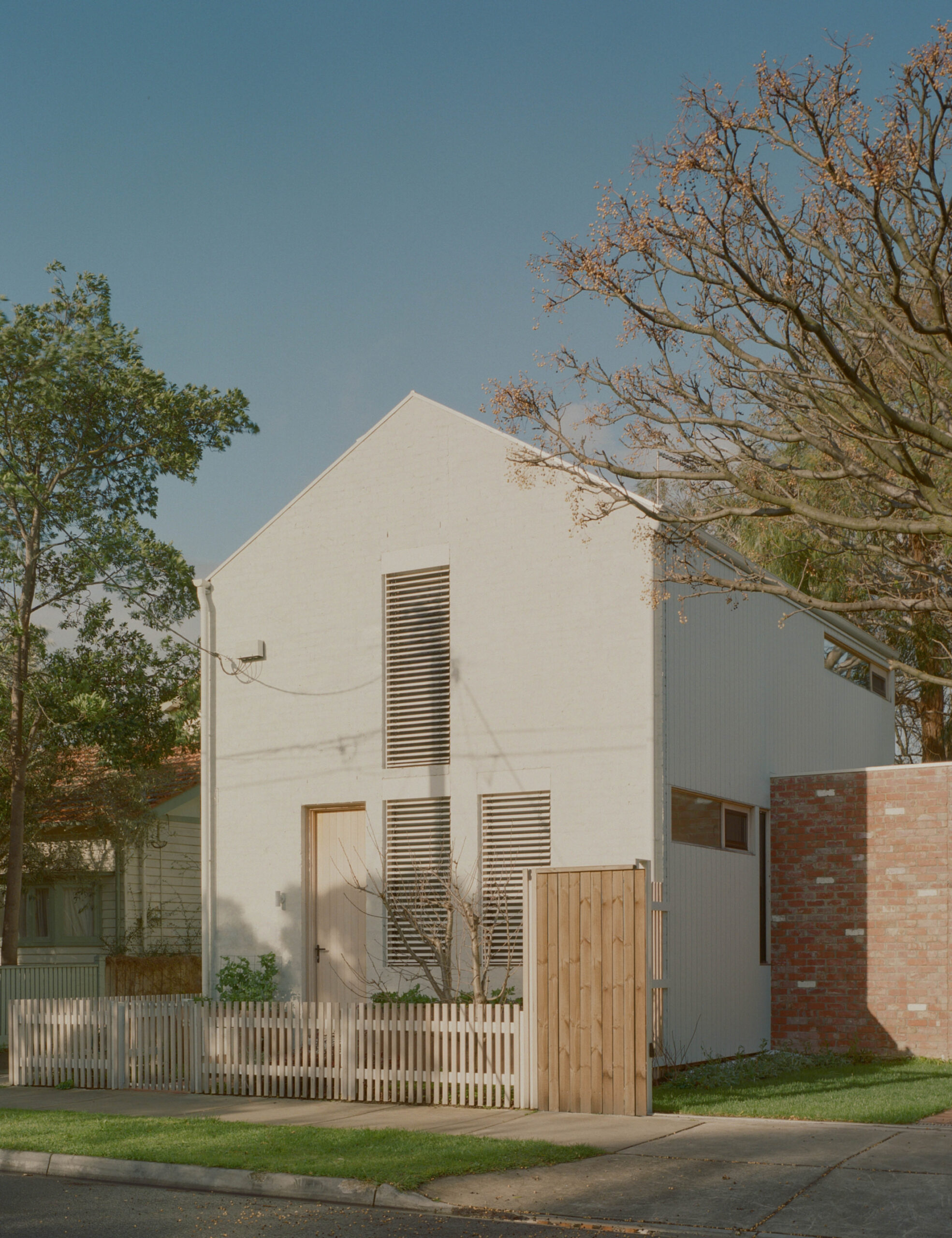Little Brick House by Ben Callery Architects is located in the backyard of a Northcote family home, where his semi-retired client, Maddy, had lived for 30 years.
After her husband passed away, Maddy was considering downsizing until her son Micheal floated the idea of building her a new compact residence at the rear of the block.
This way, he and his partner could move into the existing Edwardian — allowing Maddy to remain in her beloved neighbourhood, while also unlocking a multi-generational living arrangement that could support her ageing in place.
‘They wanted the two houses be separate, not looking into each other, but connected enough so that the dog or future grandchildren can walk from one to the other without having to go out via the street,’ practice director Ben Callery says.
The new house consumes just 120 square metres of the originally 567-square-metre block, backing up to the property’s rear lane.
Despite the home’s ‘tiny footprint’, Ben managed to carve out enough space for two bedrooms, two bathrooms, a study, and an open plan living, kitchen, and meals area.
‘The challenge was making small spaces feel bigger than their modest size,’ he admits. ‘The main living is only 3.6 metres by 7.9 metres but borrows space and light from the courtyard with full-height, full-width, sliding doors.’
The initial brief covered off a few must-haves: it had to be environmentally responsible, with solar panels, have windows framing views of the street, and feel modern, without looking like one of the houses Maddy described as ‘square boxes with flat roofs’.
‘She also wanted it to connect with the elements, to be naturally comfortable: breezy in summer and warm with natural light in winter,’ Ben says.
Built from recycled, white-painted bagged bricks, the resulting house exudes a calming energy both inside and out. The double-brick construction provides thermal mass in addition to serving an aesthetic purpose alongside the rest of the biophilic material palette, with natural timbers throughout and green-coloured joinery in the kitchen.
It took almost a year to obtain approval from the council to build the second dwelling in their backyard, due to restrictions around potential sub-divisions.
But Maddy and Micheal are both delighted with the result, noting how the project has given both households a sense of autonomy and community. In fact, Maddy has heard of two neighbours who are looking to set up similar multi-generational living arrangements.
It’s not the first time Ben and his team have been enlisted for a project like this, and the Victorian Government is currently exploring fast-tracking the process for permits in a bid to aid the current housing crisis.
‘It is a valuable way of increasing density in our inner suburbs — addressing issues of housing affordability, ageing in place and sustainability, both environmentally and also socially,’ Ben says.

